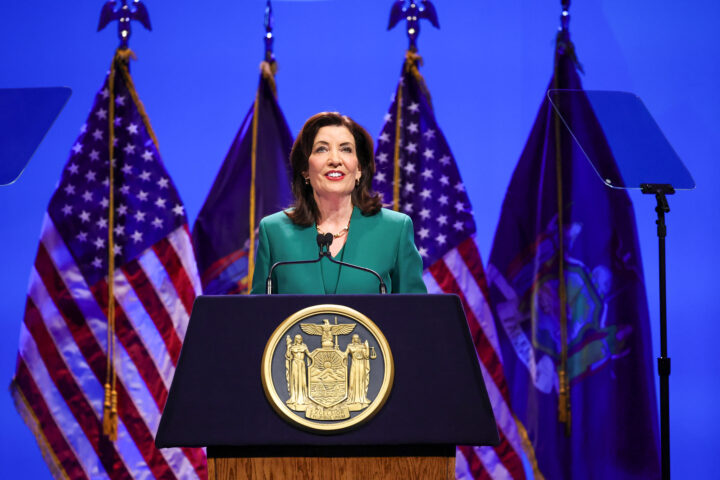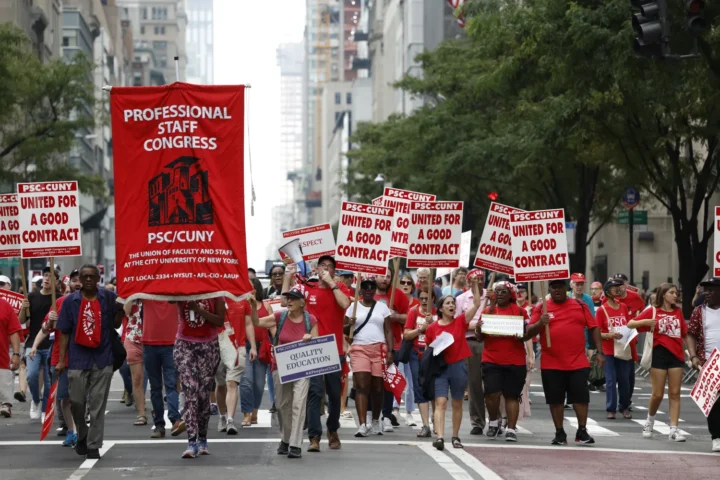In early February, CUNY issued a memo to the Presidents and Department Heads of all its 25 colleges, ordering each college to issue a hiring freeze and develop a ‘Savings Plan’ that includes a 5-6% cut for programs and activities. Since then, the state has passed its new budget plan that includes a significant budget boost for CUNY. However, CUNY may still implement the Savings Plan initiative as it faces other fiscal challenges with a decline in admissions and a reduction in city funding.
On May 2nd, New York State passed its 2023-2024 State fiscal year budget in which CUNY received $821.4 million in operating funds: an increase of $103 million from the previous 2022-2023 State fiscal year. In addition to operating funds, the state budget also granted CUNY $1.1 billion in capital support, divided into $535 million for expansions and ‘major revocations,’ $384 million to maintain current facilities, and $119.7 million going to community colleges.
“The plan also provides $1.1 billion in capital funds to expand, improve and provide critical maintenance for CUNY’s 25 campuses, solidifying the strong impact of historic investments that were included in the current fiscal year,” said CUNY Chancellor Félix V. Matos Rodríguez of the additional support.
This capital support is much needed as the 2024 CUNY budget request states, “The current estimated value of Deferred Maintenance Backlog is about $4.3 billion which will be reviewed through our current Facility Condition Assessment Contract… Currently, about 8% of CUNY buildings are in a State of Good Repair with a Facility Condition Index (FCI) that is estimated at about 10%”
In addition to increasing funding for CUNY, the newly passed state budget also blocked a previous budget proposal by Governor Kathy Hochul that would have increased CUNY and SUNY tuition by up to 3%. However, although the State budget has provided a significant amount of the much needed fiscal support to CUNY, there is still more that needs to be done.
James Davis, the President of the Professional Staff Congress, the union that represents 30,000 faculty and staff at the City University of New York and the CUNY Research Foundation, expanded upon this point in a statement he issued to the union on May 3rd:
“These gains couldn’t have come at a better time, as CUNY management has proposed deep ‘savings target’ cuts to academic programs and student services because of state budget uncertainty, cuts from Mayor Eric Adams, and enrollment declines. With these significant increases in state funding, Chancellor Matos Rodríguez must reverse the planned cuts and commit to protecting the jobs of PSC members, appropriate class sizes, and the quality of a CUNY education. The chancellor must now fight to increase NYC funding for CUNY.”
Mayor Eric Admas has set CUNY’s funding at $1.29 billion, a $150 million dollar reduction from last year’s budget, a figure that falls $229 million dollars short of the city’s modified spending forecast for the current fiscal year. In addition to budget reductions in the city budget, the mayor has implemented cost cutting measures through the city’s Program to Eliminate the Gap initiative which has reduced CUNY funding by 18.4 million in the current fiscal year and $41.3 million for the next fiscal year.
A decline in enrollment has been the main place of financial strain for CUNY, as admission fees are a big aspect of how individual schools fund their needs. According to the Gotham Gazette, this past Fall, enrollment across all CUNY schools fell to 220,260 — a 9% decrease from 243,000 in the Fall of 2021, and an astronomical 19% difference from the 271,242 students enrolled in the Fall of 2019.
This has been a cause of concern for Queens College. In a statement given to The Knight News about how the decline in admissions has affected Queens College’s fiscal start, Joseph Loughren, QC’s Assistant Vice President for Budget and Finance stated:
“Lower enrollment has affected the college significantly, similar to other colleges within the university and nationwide. We have been fortunate to be able to offset revenue losses with federal funds through the Higher Education Emergency Relief Fund (HEERF), however we are exploring coping strategies for when the program ends at the end of FY 23 [2022-23 fiscal year].”
It is within the context of these fiscal constraints that on February 3rd, CUNY’s Executive Vice Chancellor and Chief Operating Officer, Hector Batista, sent out a memorandum to the Presidents and Deans of the 25 CUNY colleges outlying ‘saving targets’ for the 2024 fiscal year. In the memo, Batista ordered a 5-6% budget cut to programming and activity expenses and a hiring freeze. Each of the 25 CUNY schools were required to design an individual Saving Plan for the 2024 fiscal year which each school had to send in by March 3rd.
When asked about the key components of the Savings Plan that Queens College was required to develop, Mr. Loughren told The Knight News that, “The Fiscal Year (FY) 24 Savings Plan relies on increases in revenue over FY23, as well as savings in adjunct salaries, part-time employees, and supplies/equipment.”
In a letter obtained by the The Knight News it was revealed that ‘the Provost’ — presumably Patricia Price QC’s Interim Provost and Senior Vice President for Academic Affairs, or Price’s office, has ordered each department to construct a budget model that contains a 15% or a 20% cut to their adjunct budget as they prepare for the next academic year’s course offerings. This will cause there to be less courses available across the board as there will be less adjunct professors on staff, and the ones that will be present will logistically be paid less.
Despite the New York State’s CUNY budget boost, CUNY has not yet announced changing the budget cut trajectory outlined in its Savings Plan. The fight by PSC and other organizations now turns to Town Hall, as Mayor Adams has continued to decrease or keep CUNY funding flat.
In the meantime, PSC-CUNY is proposing “New Deal for CUNY.” The proposal “mandates public investment, again at the federal, state and city level” and free tuition for all students. If enacted, the New Deal would detach CUNY budgets from enrollment numbers. According to PSC-CUNY, “Every one of CUNY’s Nobel laureates attended tuition-free. It is not an overstatement to say that there would be no healthcare industry, no fashion industry, no publishing industry, a diminished finance industry, and a scarcity of public school teachers in New York City if not for CUNY’s unmatched ability to offer new immigrants, the working class and the poor a chance to attend college free that they received nowhere else.”











